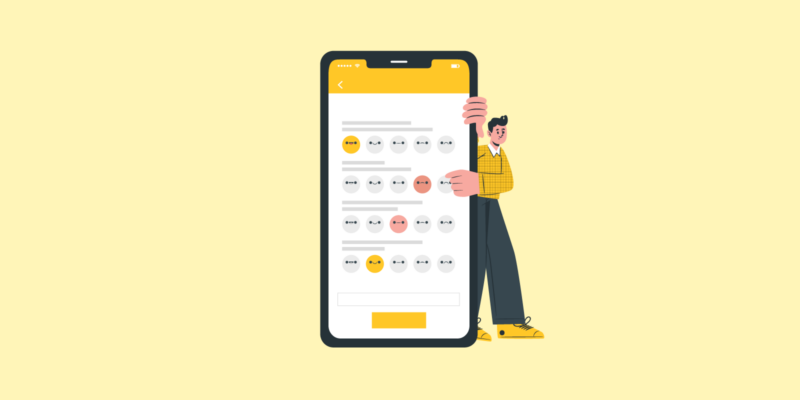Can you think of a product or a service that is extremely popular, but if you really think about it, is overpriced and has got quite a few annoying features? Yet you would still 100% recommend it to your family and friends?
Apple – you either love them or hate them. A study exploring “consumer brand hate” by Psychology & Marketing, found that in 2018, Apple was the most hated brand in the market. Yet, they have got an excellent Net Promoter Score of 69 (anything above 50 is considered excellent). Apple products are often overpriced, aren’t easily compatible with other devices and are losing innovation that set them apart at the beginning. So, what is it that makes people continuously love Apple?
Apple uses NPS on an ongoing basis to gather instant customer feedback for a customer centric approach. After each purchase, they send a one-question survey to the client, asking how likely they are to recommend the product to others from scale 1-10. Customer loyalty is a key feature of Apple – you buy into the experience.
They communicate to their customers based on what they care about, and understand that experience, not price, matters. Sleek design, easy and secure user experience that creates hype and excitement around the brand.
Active and efficient use of NPS score, leads to organic sales growth through word of mouth marketing and higher customer retention rates.
In this article
What is NPS – Net Promoter Score?
NPS is dubbed as one of the most popular metrics in evaluating a company’s success. And this, for a good reason. NPS score measures how willingly would your customers promote company products and services to their others.
Net Promoter Score is a customer loyalty metric that is asked in one question and often also a follow-up question. This can be evaluated from scale 1 to 10, and the results are clustered as either a promoter (9-10), passive (7-8) or detractor (0-6).
- Detractors (score 0 to 6): These are the customers who are unhappy with your products or services and would never recommend your brand to others. They can cause significant damage to your brand by publishing negative posts about your products or by complaining to others about your products. Your goal should be to ask about pain points to Detractors and convert them to satisfied or happy customers.
- Passives (score 7 to 8): These are the currently happy customers but are not loyalists. Competitors can poach these customers through competitive offerings, as they are not very enthusiastic about your brand. Your goal should be to convert passives to Promoters.
- Promoters (score 9 to 10): These are your loyal and enthusiastic customers who never miss a chance to recommend your products or brand to their family and friends. These customers are responsible for repeat purchases and have to be nurtured so that they don’t become passives or detractors.
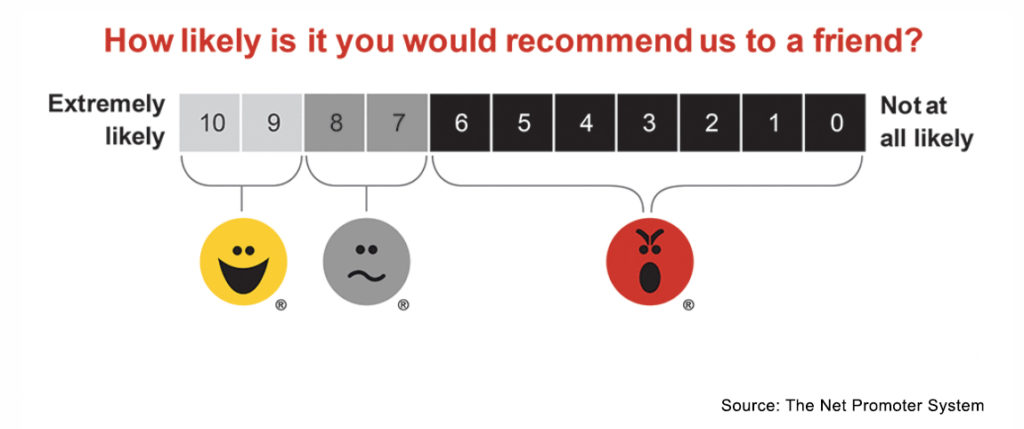
Furthermore, NPS isn’t always just about one aspect of the business, and in order to make the most of it should be measured on an ongoing basis at different stages of the customer lifecycle.
Two types of NPS surveys
1. Transactional NPS surveys
Transactional NPS surveys are sent on an ongoing basis, each time after providing service or selling a product, and are used as real-time, actionable data.

2. Relationship NPS surveys
Relationship NPS surveys are sent periodically (for example every quarter) to measure overall customer sentiment and loyalty towards a company, rather than just products and services.
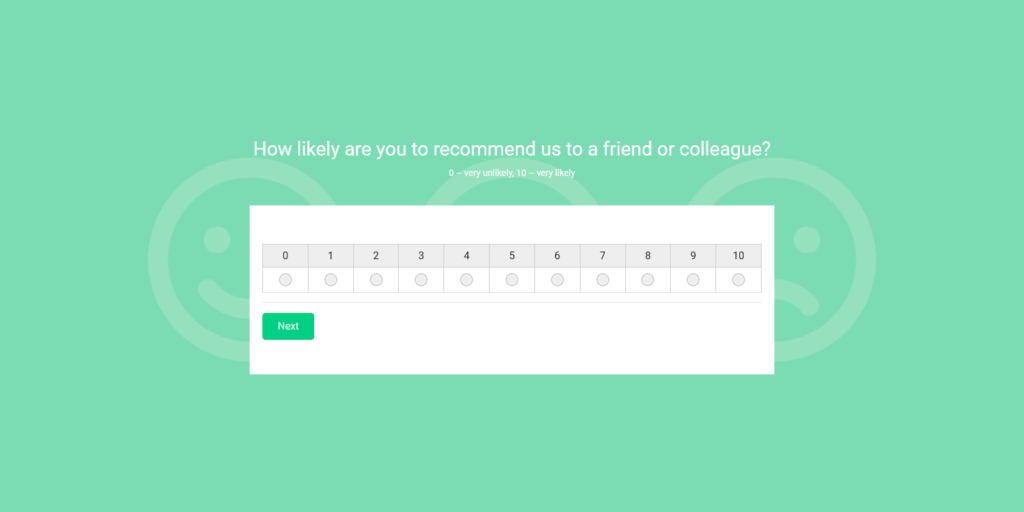
By tracking NPS improvements in different areas can show whether customer sentiment is decreasing or increasing, and help you make business conscious decisions. Adopting a holistic and proactive approach in not only listening to the customers, but also actively making changes, companies are rewarded by customer loyalty and in turn, higher organic sales growth.
How is NPS calculated?
With a simple calculation we can get the Net Promoter Score number. In order to do this, we subtract the percentage of Detractors (customers who scored 0-6) from the percentage of Promoters (customers who scored 9-10).
So, to bring an example, if 60% of your respondents are Promoters and 30% of them are Detractors, your NPS would be at 60% – 30% = 30.
What is a good Net Promoter Score?
Now, the question is – how good is a good NPS score and how high should I aim as a business owner? This totally depends, but on average, a “good” score is anything above 0, because this means that your customer would recommend you, more than, not recommend you.
It also depends on the sector you are operating in. Analysis done by Retently, points out in their NPS Benchmark 2020 study that the average range for “good” is between 27 to 71, by looking into their customer base across various industries.
- It is helpful to create a scale and benchmarks in order to compare where the business is now and what is realistic to achieve.
- Even though the score value may not be that important on its own, comparing this metric to what other companies have achieved can give a good indication of where your business stands in the market.
- Top sectors were Education & Training at 71, Insurance at 70, e-commerce came third with 61. Worst ranking industries were unsurprisingly Logistics & Transport and Healthcare with 29 and 27 accordingly.
Why Net Promoter Score – NPS?
This metric alone is extremely valuable for measuring customer loyalty, as it helps with finding ways to improve your company products and services. It enables businesses to base their decisions and changes on customer feedback. In a simple and easy way with just one question.
- Customers like nothing less than filling out a lengthy and time-consuming survey: statistics show that surveys that take longer than 10 min can cause a drop-rate in response by 40%.
- Of course, NPS cannot replace in-depth customer research surveys, however by measuring customer loyalty we can easily track each part of the business, as well as the overall customer sentiment towards the company.
- There are many excellent online tools that are easy to use in several price ranges. Depending on the purpose and needs of a company can be customized.
Below, we dive into the best online tools for NPS scores and bring a real-life example of how a multi-billion-dollar e-commerce company uses it to reach the highest growth.
Best NPS Survey Tools for SMEs
Depending on the scale and needs for obtaining the NPS, there are many tools to choose from, usually offering a free trial and are usually subscription based. Finding the right tool for you can be stressful and time-consuming.
Therefore, we’ve put together this short and simple guide, highlighting the pros and cons depending on your business needs. I will guide you through different features, pros & cons. There are two types of NPS software offerings: add-on NPS tools and specialized NPS tools and depending on the complexity and cost.
Add-on survey tools are usually where survey software companies include NPS options as an add-on to their core service offering. They may also provide a variety of other services, for example marketing services. For more detailed analysis you may want to choose a more specialized survey software that offers reporting and dashboarding, real-time monitoring and collaborative tools.
1. Woorise
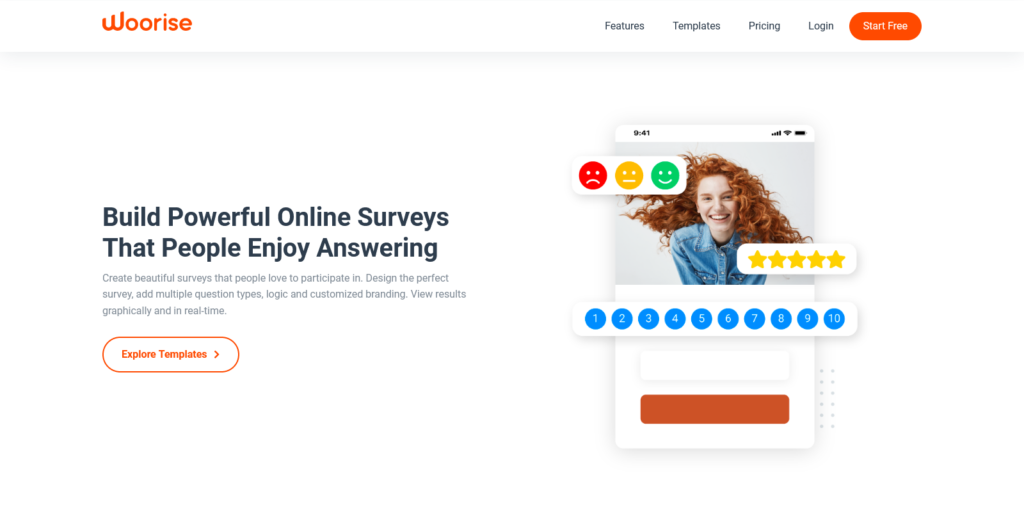
Woorise is a complete lead generation solution and online survey building solution for small business that easy to use. A coding-free solution that most marketing people should be able to master quickly and generate the leads or feedback that they need.
The online form tool allows the creation of sophisticated surveys and their responses to be data harvested. Woorise can also be used for straightforward customer feedback widgets on websites and social media.
Price range: you can create a simple survey with basic stats on Free plan but dedicated survey features and reports are available on Grow and Pro plans starting at $49.
Pros: simple to use drag and drop survey maker with hundred customization options. You can quickly start choosing from a list of beautiful survey templates and customize them further to meet your needs and your brand’s style.
Cons: it’s great for small business and ecommerce sites who want to create a NPS survey quickly but you will need a dedicated NPS survey tool if you are on enterprise level.
2. Qualtrics
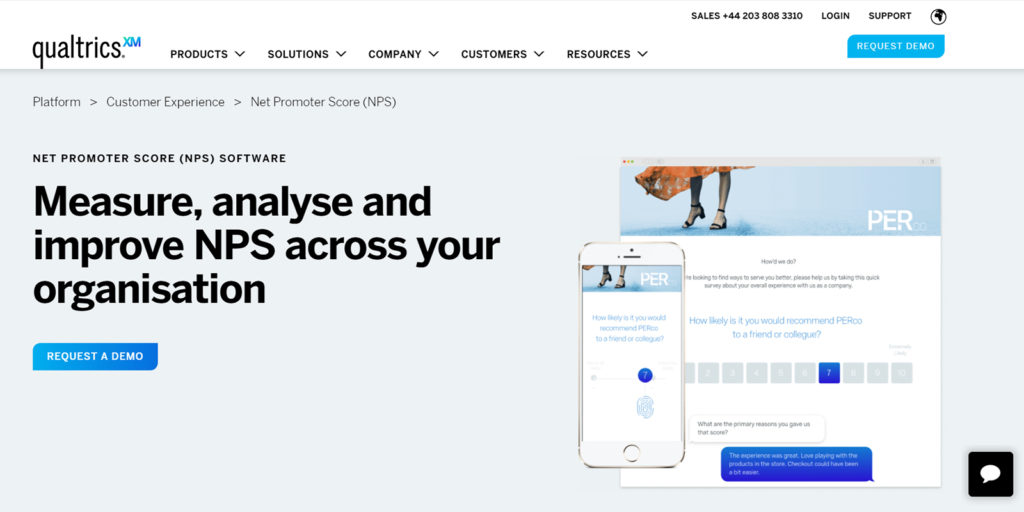
Qualtrics is one of the most popular survey tools, usually for more complex surveys and reporting. They use AI and machine learning to automate every step of the customer feedback process. Top choice for enterprises due to sophisticated questionnaire options and several configurations, however also great for small businesses as offers range from affordable to expensive depending on complexity.
With Qualtrics NPS Software tool (which you can sign up for a fee for a trial) you can calculate and analyze your NPS score and collect feedback through multiple platforms from email, apps to offline surveys to help you interpret them into actionable insights to increase customer loyalty.
Price range: $1,500 per year up to $5,000 a year depending on features and complexity; offers free trial and features.
Pros: clear and flexible dashboarding & reporting, live chat, automated – AI and machine learning, feedback gathering possible across all channels (text, chatbot, app, email).
Cons: can get expensive and complex to use, a little more focus on corporations however still great for SMEs as well.
3. SurveySparrow
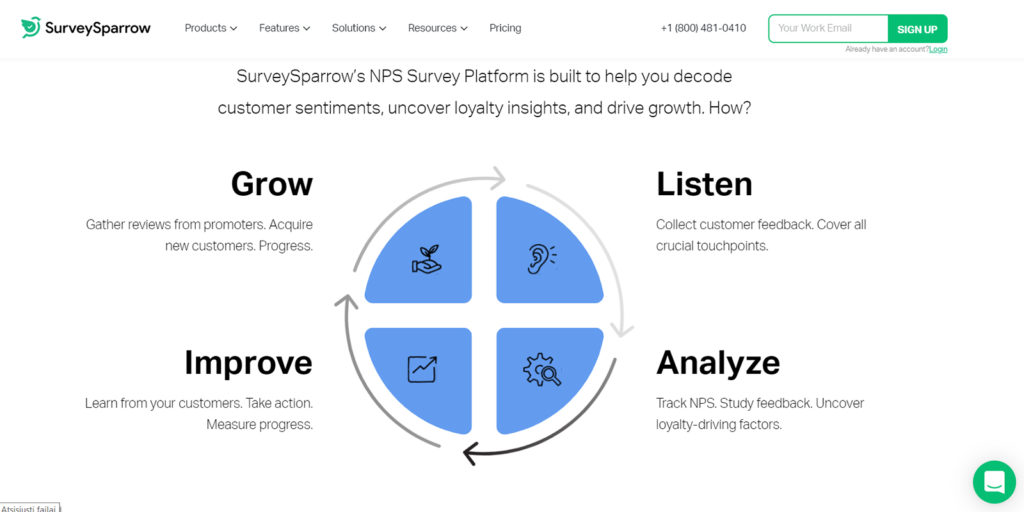
Among many online survey tools, SurveySparrow is a good and more affordable alternative to Qualtrics, that targets both SMEs and enterprises, with a separate NPS subscription plan.
This tool allows you to send out NPS surveys to your customers to see how likely they are to recommend your products & services. They can be sent out on multiple platforms as and when required, with an automated workflow. They have a high focus on mobile channels.
Price range: $249 for NPS program; $149 for small teams; $449 for enterprises – a month; offers 14-day free trial.
Pros: specific NPS plan available, for small businesses as well as corporations, customized pricing, targets mobile audience, chat service, built-in email sharing & recurring messages.
Cons: mainly chat only customer service, less focus on email channel.
4. Simplesat
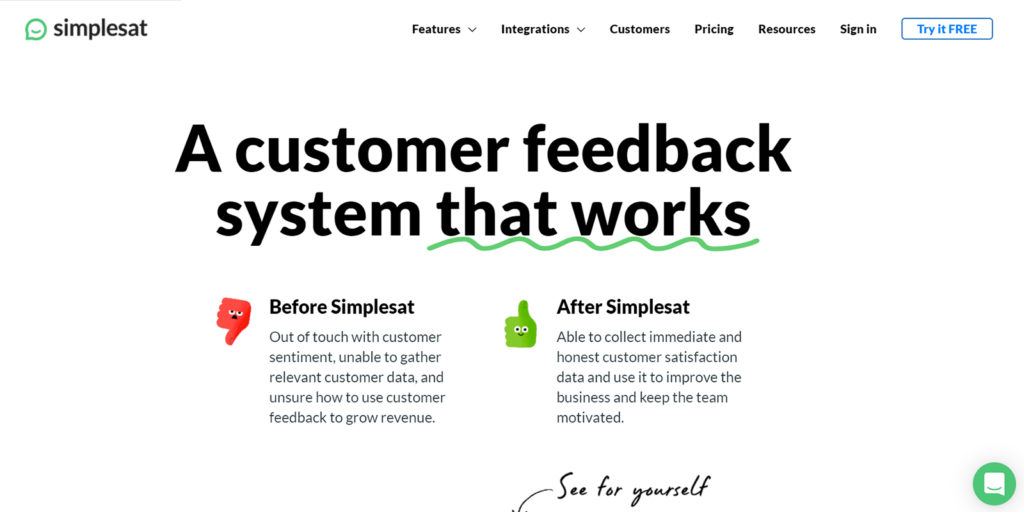
Simple and easy to use, Simplesat specialized customer feedback tools for SMEs. Features specific NPS survey options with automated emails, customer communication across various channels including chat, and most importantly has got a good reporting and analysis system to make use and analyze data that is key for business growth. Great value for money and would recommend especially for small businesses, as they also have an affordable all-inclusive price offering.
Price range: $49 – $99-month all-inclusive pricing & offers a free trial.
Pros: affordable – unlimited customers, users, surveys, and feedback, automated NPS emails, data exports (PDF & CSV), specific NPS surveys available, good reporting for the price.
Cons: better dashboarding & filters however can’t complain considering the price.
5. SurveyMonkey
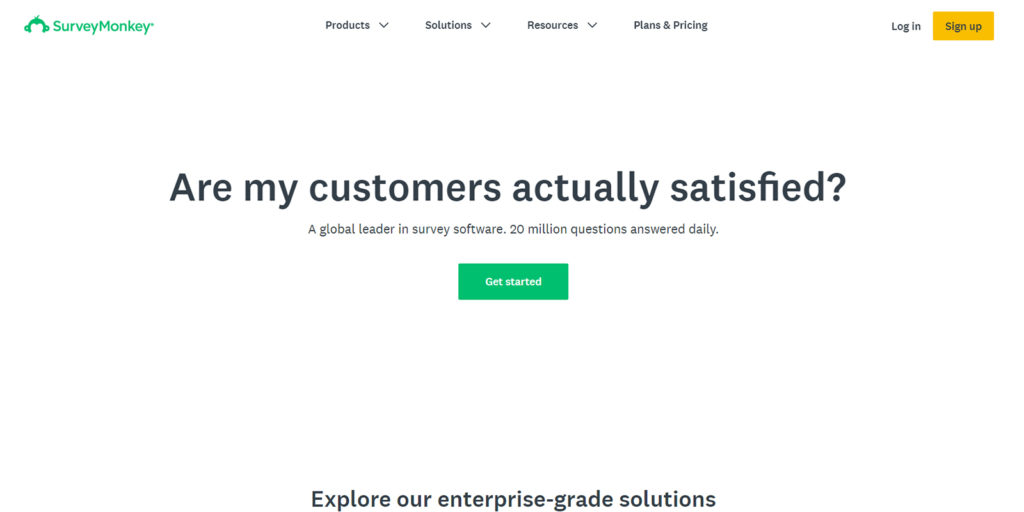
SurveyMonkey is a well-known tool for online surveys, is easy to use and comes at an affordable price. They have flexible plans for individuals and small businesses.
They have a specialized NPS survey tool for easy calculation for your Net Promoter score as well as context for the results. It is very good and affordable if you want to calculate and track your NPS score on an ongoing basis, but there is less actions and in-depth data that you could collect such as demographics of people etc.
Price range: 30€ – 99€ a month for SMEs and individuals, N/A for corporations.
Pros: clear NPS survey focus, affordable and focused on individual and small business needs, easy to use, flexible and easy data collection, real-time reporting, great follow-up tools.
Cons: limited number of questions, weak reporting options, lack of automated features such as anonymous respondent option, custom tags, slider button etc.
6. Zonka Feedback
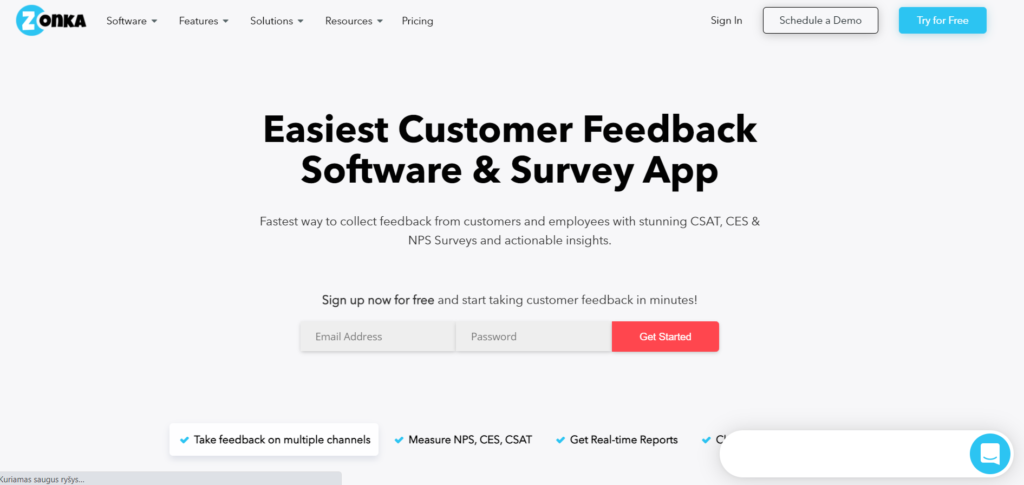
Zonka Feedback platform is a perfect multi-channel tool for both SMEs to capture and analyze customer feedback across multiple channels from offline to online. It is very easy-to-use and has a focus on helping you to improve and derive actions for growth.
You can tailor the surveys to your specific needs depending on the requirements of your business. You can track responses in real-time to act on them right away in a collaborative way – accessing the same feedback from multiple channels in one place, where you can assign tasks to your team members.
Great tool for not just measuring the NPS but also turning it into actionable insights to improve customer experience and grow customer loyalty.
Price range: $33 – $429 a month depending on the plan.
Pros: in every price range and tailored to specific needs, industry specific templates, collaborative tool and focus on actionable insights for growth.
Cons: dynamic dashboarding, but not many cons overall.
How to use NPS results to drive growth?
NPS was invented by Frederick Reichheld of Bain & Company, author and business strategist best known for his research in customer behavior. His research shows that increasing customer retention rates just by 5%, would increase profits by an impressive +25% to +95%. Therefore, surveys and survey software, is an important tool to provide you with a wealth of data and insights to provide action points, to increase revenues and gain market share.
- A company that has excelled in not only listening to their customers, but also taking their feedback on board to make changes and improve company products and service is e-commerce retailer Amazon.
- They are famous for their fast delivery times and excellent customer experience. Amazon has achieved an impressive NPS score of 69. As mentioned earlier – increasing customer retention rate just slightly can double or even triple the profits.
- Amazon offers a wide variety of excellent services: free Prime trial, $12.99 Prime membership with 1-day delivery, free returns, 30-daiy refund policy, customer loyalty program etc. Even though providing all these services can be operationally costly, their investment in excellent customer experience has paid off.
- Amazon now benefits from high customer retention numbers, by-word-of-mouth marketing, extremely high market share and increased revenue growth.
To sum up what we discussed in this article
NPS – Net Promoter Score measures customer loyalty and how likely they are to recommend a product or a service to others. Measured with a simple question “How likely are you to recommend this to others?” and is clustered into promoters, passives and detractors.
It is measured from scale 0-10, and calculated from -100 – +100 scores, with a simple calculation of % of Promoters – % of detractors.
There are a variety of survey software tools out there, to easily create a survey and get the NPS score. There are several tools available in every price range, often offering free trials, and can be tailored to your needs.
Calculating the NPS score once is usually not enough, it is important to make sure you track and implement changes from the results to enable growth. These software tools can also help you to have a reporting system and analyze the results in a collaborative way, real-time.
By turning your passives and detractors into Promoters, you benefit from increased sales and market share, due to organic marketing and higher customer retention rates.


